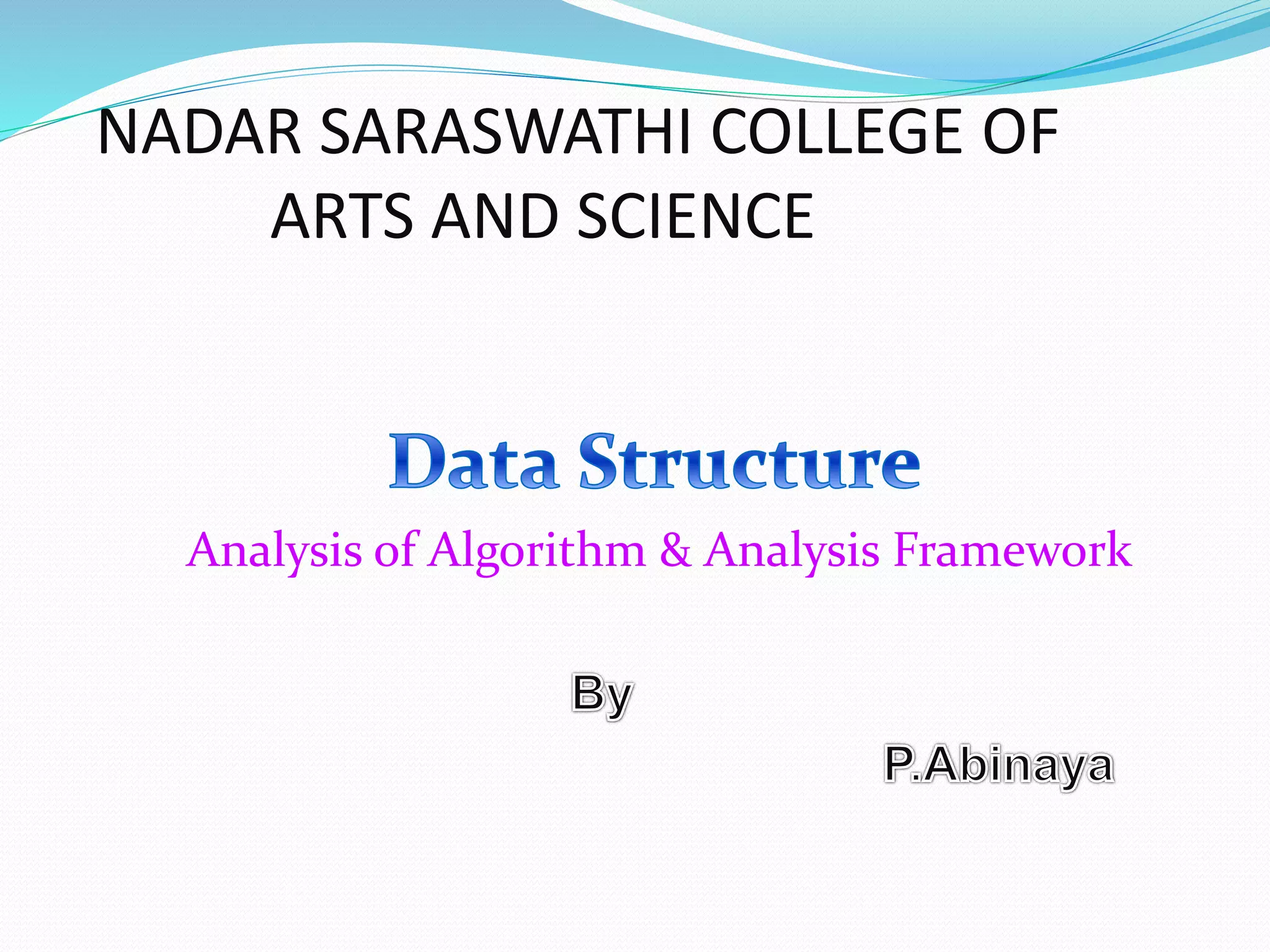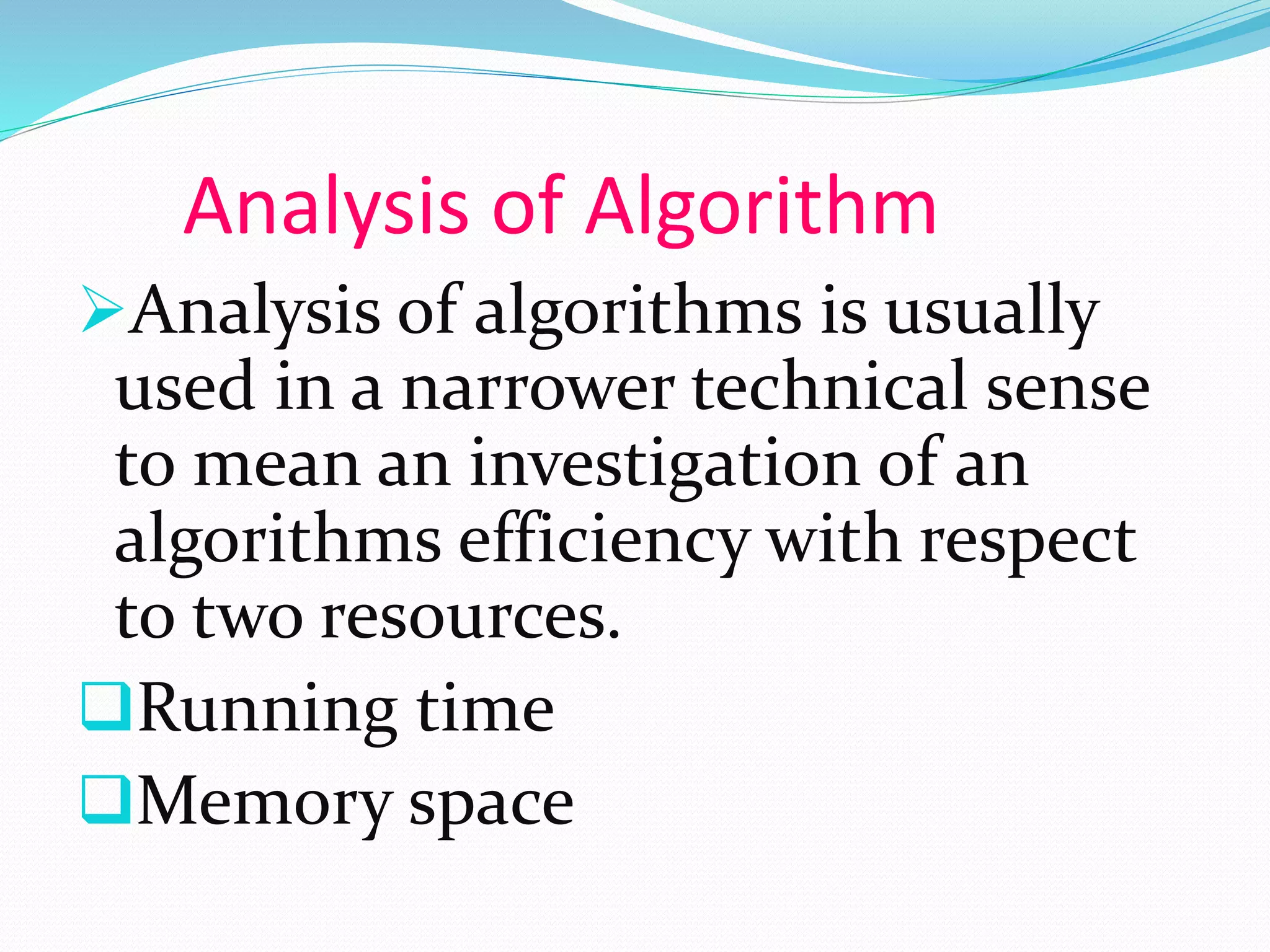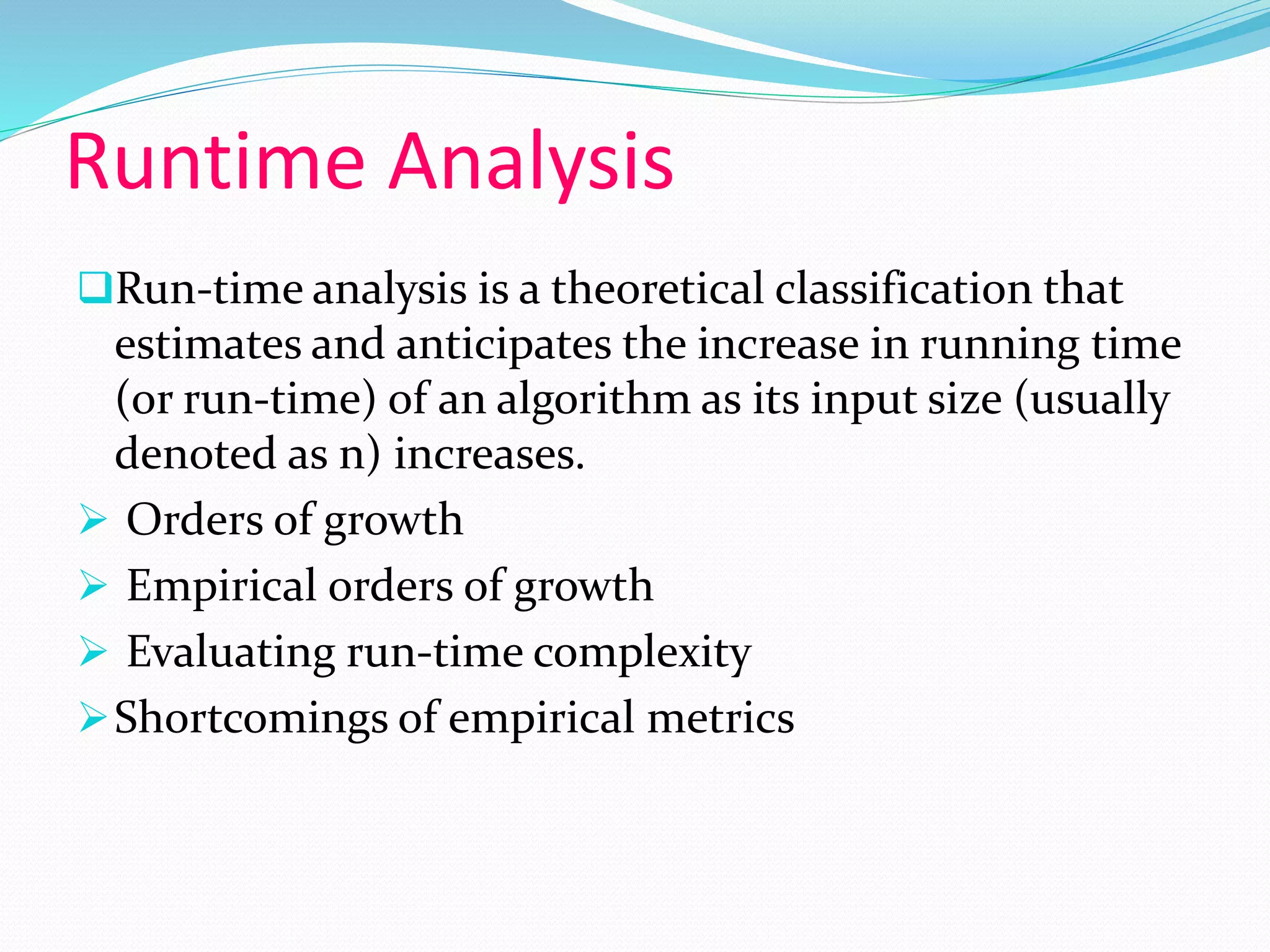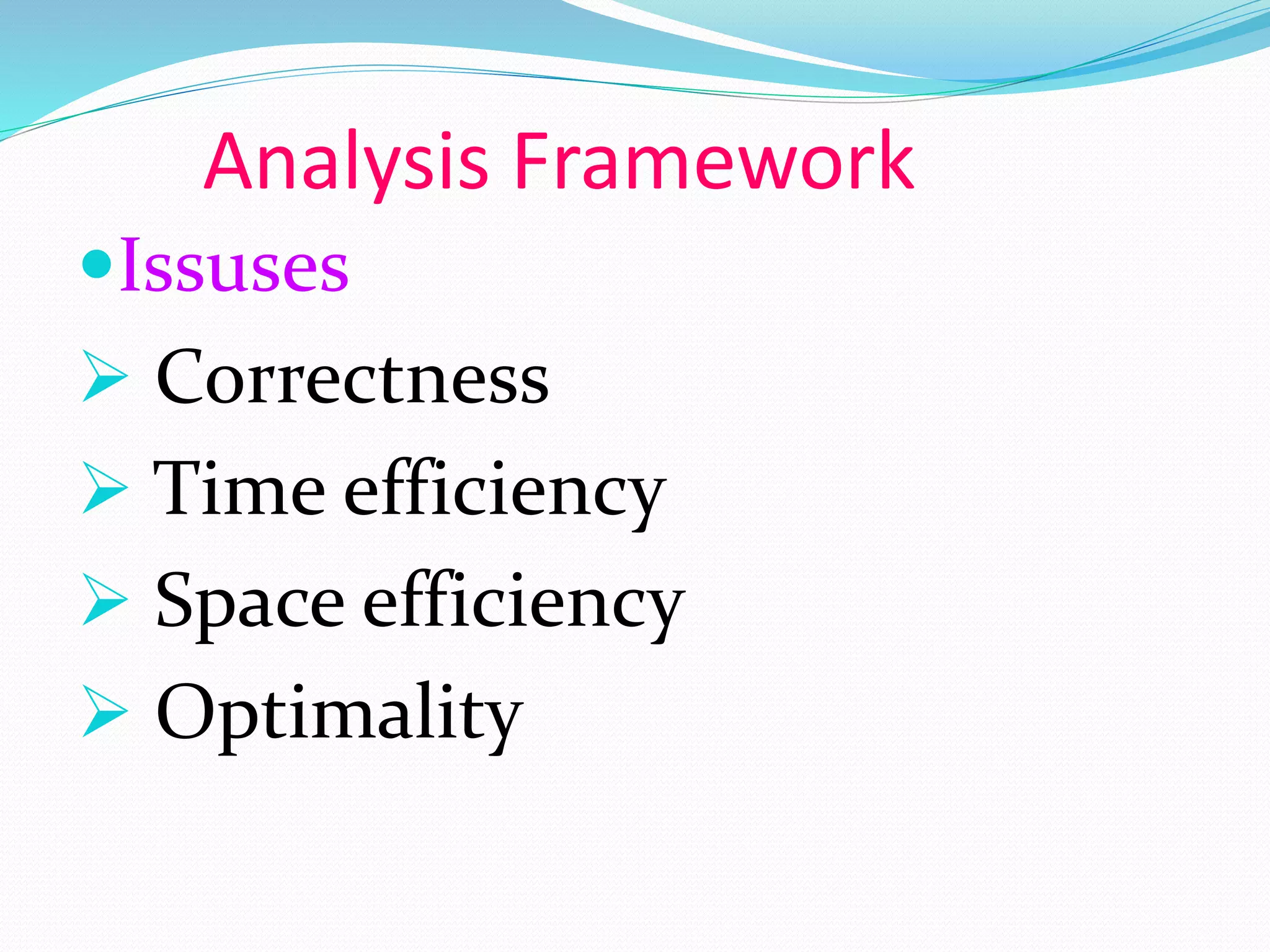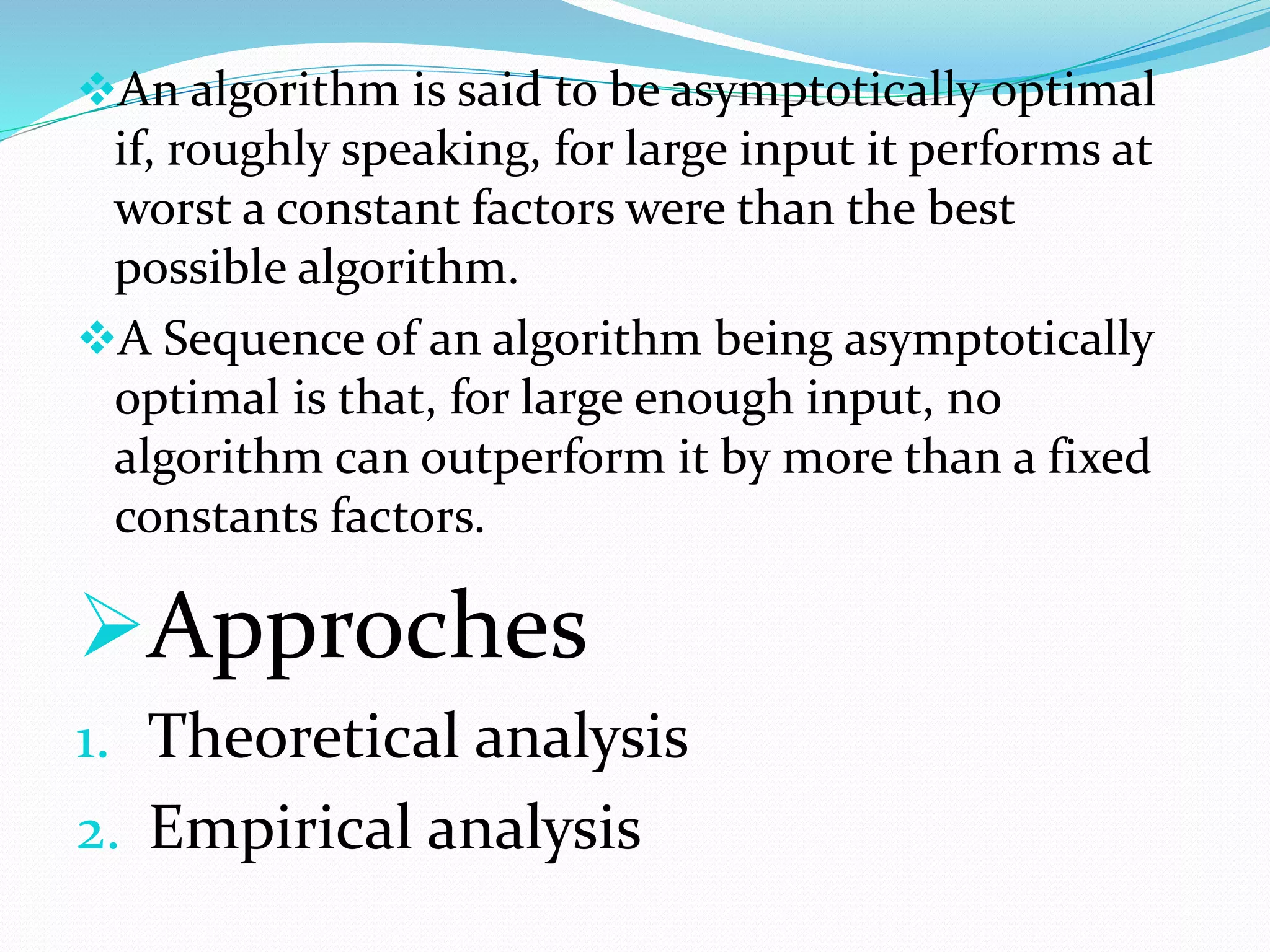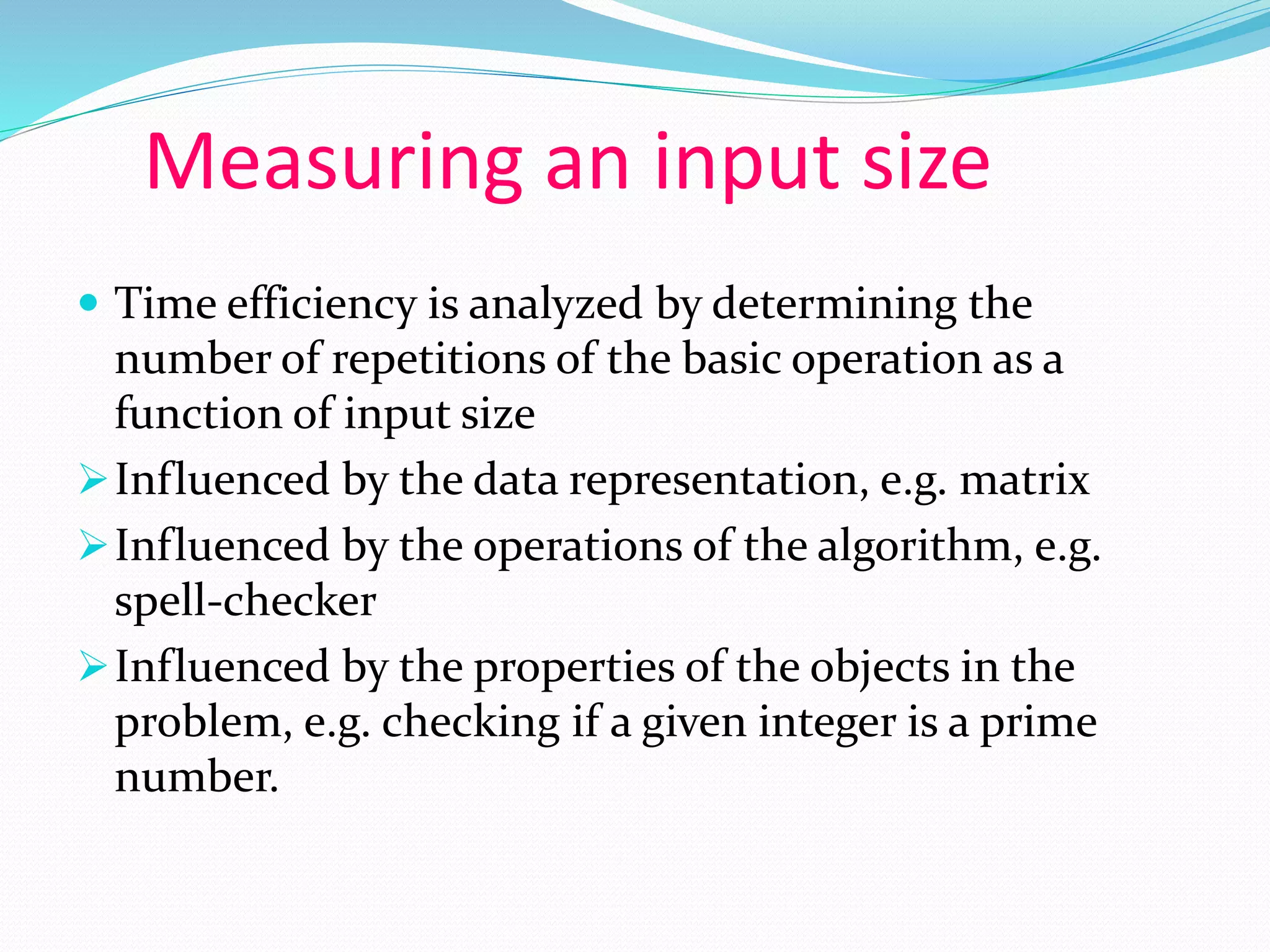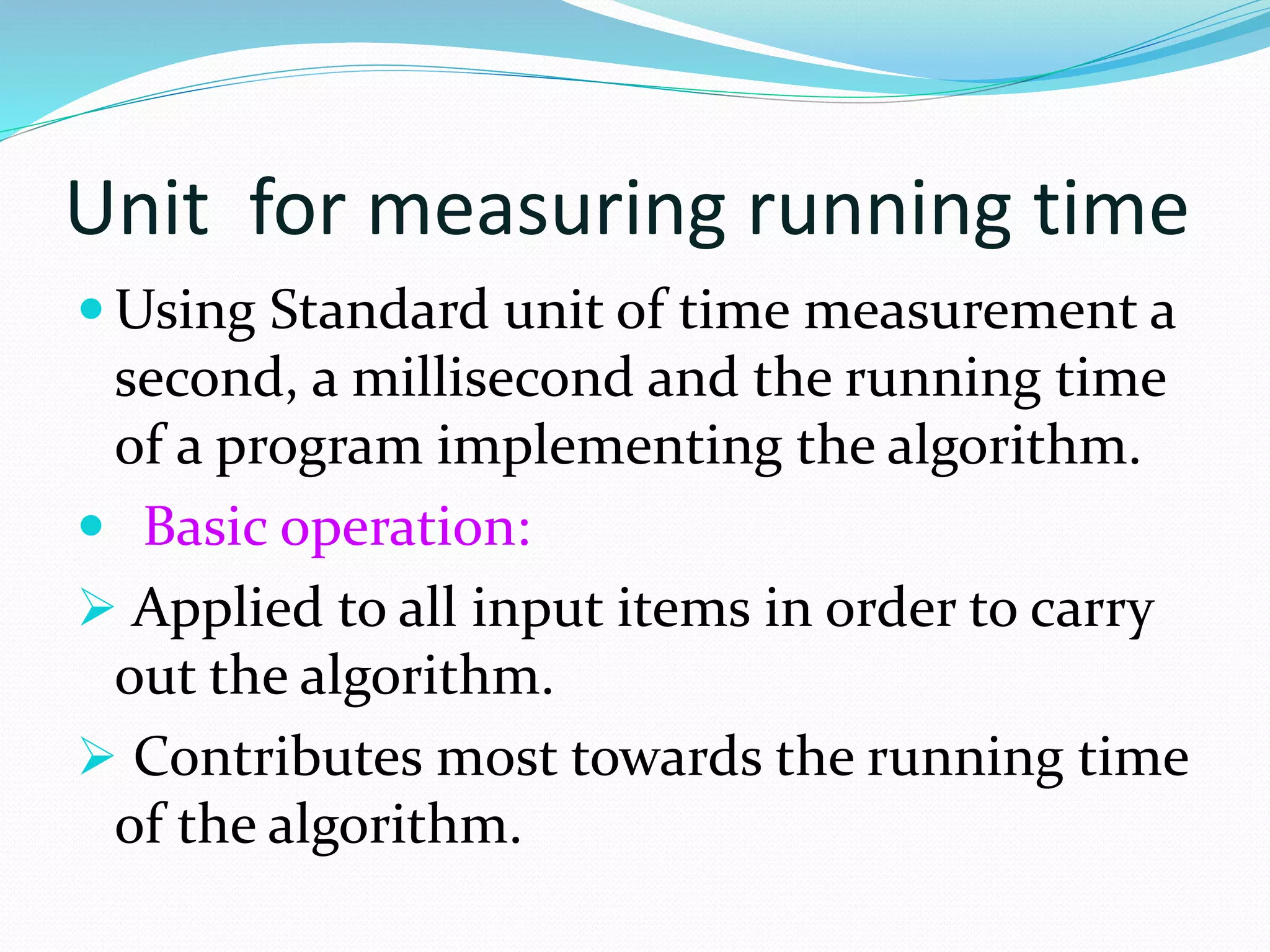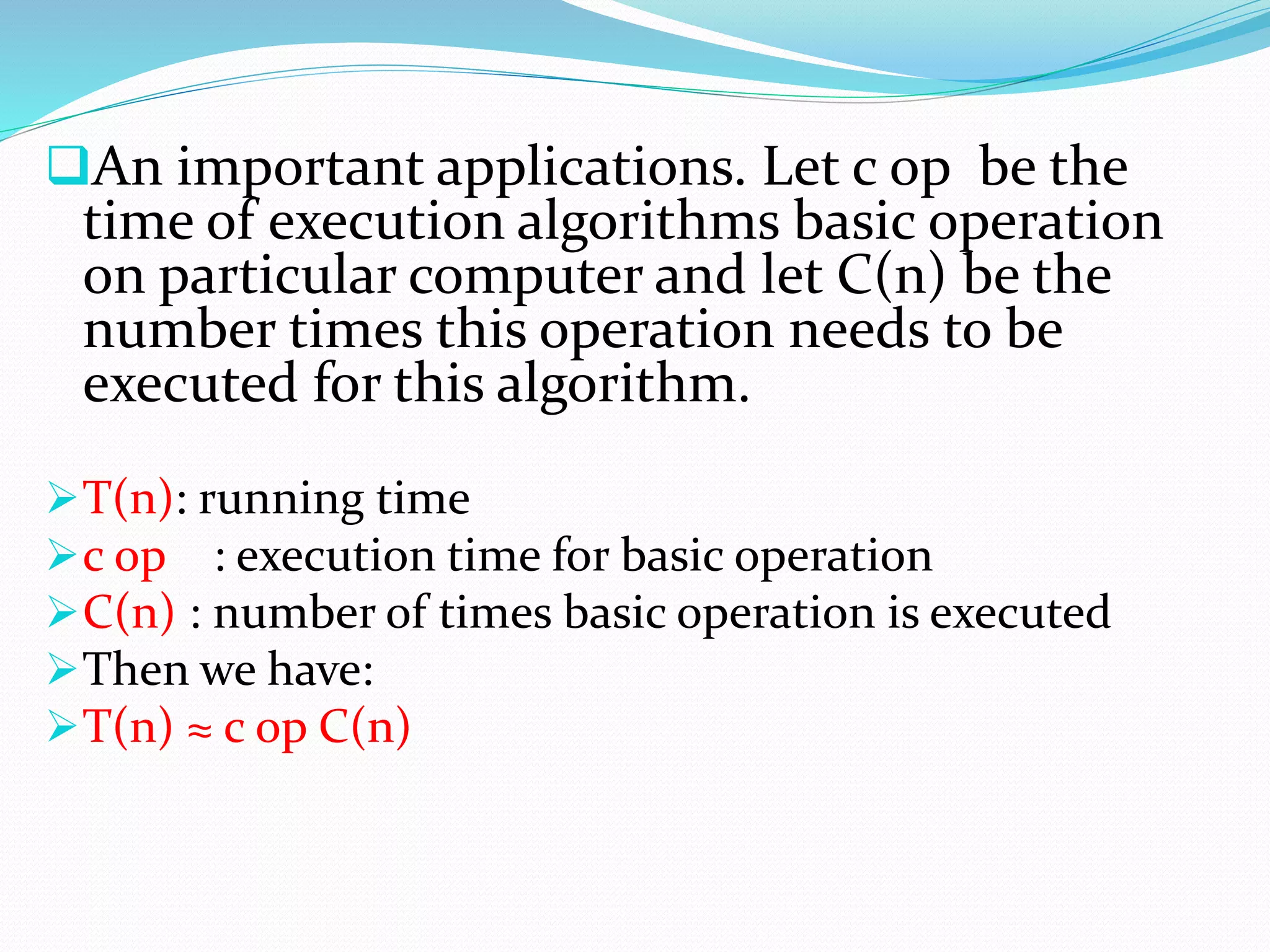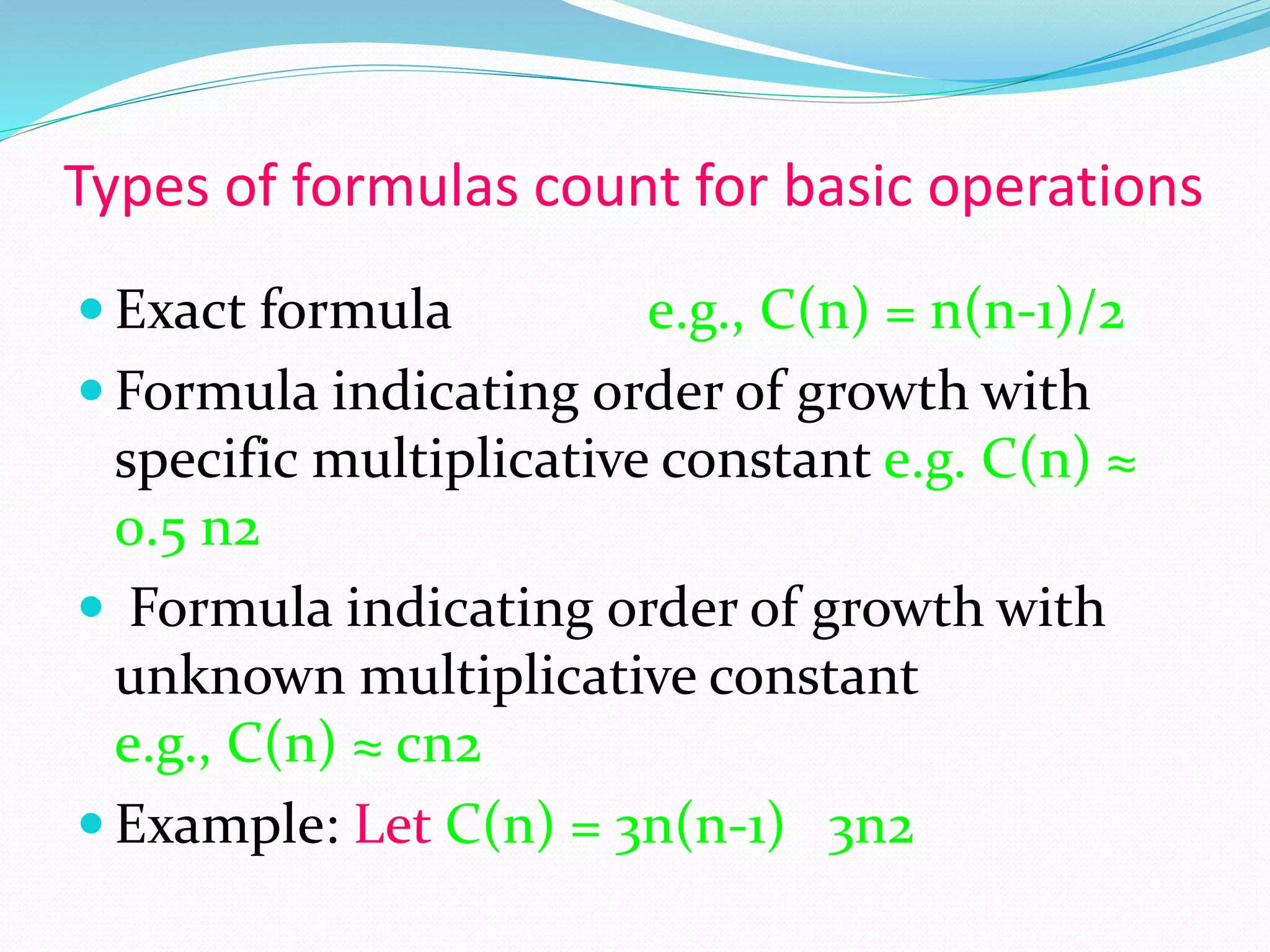The document discusses analyzing algorithms with respect to running time and memory space efficiency. It describes analyzing running time complexity by determining how the number of basic operations grows with increasing input size. The analysis framework considers issues like correctness, time efficiency, space efficiency, and optimality. Approaches to analysis include theoretical analysis using asymptotic analysis and empirical analysis of actual running times. Measuring input size and the basic operations influences the analysis. Formulas are used to quantify the number of basic operations executed based on input size.
